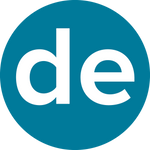An interview about million marks, growth factors and domain potentials
In mid-July, .de reached another milestone: The 17th million domain under the German country code was registered. A good occasion for an interview with Andreas Musielak, member of the board of the DENIC registry, about the current growth and his forecast for the future development of the .de TLD.
Passing a million mark is not an everyday event, not even in the fast-paced Internet business. How much time has elapsed since the last million mark was crossed?
Yes, that's true, one million new .de domains always is something special. The last time such a mark was passed is almost six years ago – to be precise in November 2015. The preceding million, the 15th, was reached in April 2012, within a period of 3.5 years.
Domain growth had slowed down slightly in the recent years. This is also supported by the figures given by you. What do you think is the reason for the current massive growth?
Actually, the level of .de domain growth with a plus of more than 280,000 domains in the first half 2021 was last exceeded in 2012. But this positive development cannot be attributed to one factor alone. The generally accelerated digitisation certainly is a substantial driver, but it is also a decrease in domain deletions that contributes to the rise, to mention just one other factor. In July, we recorded the lowest number of domain deletions of the last 15 years. A clear sign that .de domains stay relevant.
You mentioned the increasing digitisation as one of the growth factors. Can you explain that in greater detail?
Of course Covid-19 has been one of the accelerators in this respect. According to a current study on business start-ups funded by the Federal Ministry for Economic Affairs and Energy, 25 percent of all start-ups founded in Germany in 2020 were initiated by opportunities that had emerged only as a result of the Covid-19 crisis. Adjusting products, services and business practices to digital business models is increasingly considered an important factor for economic success. In a survey conducted by Germany's digital association Bitkom at the end of 2020, nearly every second participant was found planning to intensify the digitisation of their business. Much to our delight, such trends frequently go hand in hand with the decision to register a suitable domain, in particular one under .de.
Do domains still play a significant role in times of social media?
From DENIC's point of view, definitely yes. Communicating via multiple channels is standard practice today and enables information offers that are tailored to specific target groups or media. A domain provides maximum sovereignty regarding the design and structure of information and thus often is the heart of the digital presence and therefore an indispensable element in the broad range of communication channels. In addition to that, you can extend a domain step by step and adjust it to new or altered conditions or requirements. Integrating a small online shop or a blog is another trend, we find to have been reinforced by Covid-19. Small business owners are increasingly making use of the possibility to market their service via a .de domain. The fact that the share in .de domains with natural persons as holders has slightly augmented compared to .de domains held by a legal entity fits in with that picture.
Are there any other changes that have been noticed with regard to the composition of the .de domain inventory over the recent years?
Comparative samples of the years 2019 and 2020 have shown that growth is fairly evenly distributed. It can be noticed, however, that .de is getting more and more international. The number of domain holders from outside Germany is rising steadily at an ever faster pace. During the period when the number of .de domains under management grew from 16 to 17 million, the number of international domain holders increased from about seven to roughly nine percent.
Do you expect these growth factors to persist and when do you think DENIC will reach the next million mark?
It can be assumed that digitisation will proceed and that domains will be part of that development. If you extrapolate the current data, a period of three years can be expected to be realistic for .de domains to reach the next million mark.
One repeatedly hears that most of the attractive domains are already registered. Some years ago, this scenario even was the rationale for introducing new generic Top Level Domains. What do you think about it?
Especially in the pandemic year of 2020, the strongest increase in the .de inventory for eight years has clearly shown that growth of the namespace of the number three Top Level Domain in the world is far from being exhausted. New situations and circumstances yield ever new possibilities to devise creative and catchy domains that are still free and registrants can use to take their undertakings and ideas into the online world.







